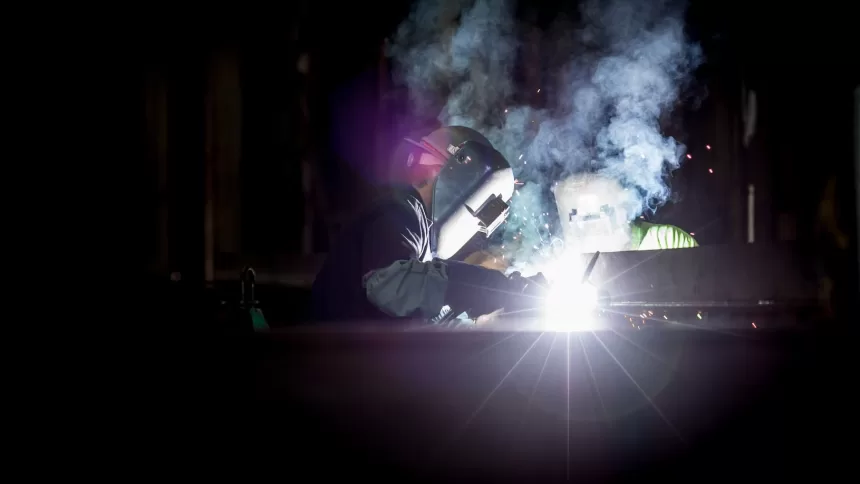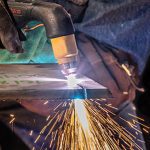Welding is a crucial process in various industries, from construction to manufacturing. While it enables the creation of sturdy and durable structures, it also presents potential hazards if proper safety measures are not followed.
Welding Safety Ultimate Guide
Welding Town
In this article, we will explore 10 essential tips to enforce proper welding safety, protecting both welders and their surroundings. By implementing these safety measures, you can significantly reduce the risk of accidents and ensure a secure welding environment.
At Welding Town, we understand the importance of welding safety and its impact on the well-being of our workers. Proper welding safety not only protects our workforce from potential hazards but also ensures the efficiency and quality of our welding operations. In this comprehensive guide, we will provide you with 10 essential tips to enforce proper welding safety and create a safer work environment for everyone involved.
1. Conduct Comprehensive Training Programs
One of the cornerstones of welding safety is a well-trained workforce. We invest time and resources to conduct comprehensive training programs for our welding personnel. These programs cover various aspects, including understanding welding equipment, proper handling of tools, identifying potential hazards, and implementing safety protocols.
2. Regular Equipment Inspections
Ensuring the functionality of welding equipment is vital to safety. We schedule regular inspections of all welding machinery and tools to identify any issues promptly. By addressing potential problems beforehand, we prevent accidents and guarantee smooth welding operations.
3. Use Personal Protective Equipment (PPE)
Personal Protective Equipment (PPE) is the frontline defense against welding hazards. Our workforce is equipped with appropriate PPE, including welding helmets, gloves, flame-resistant clothing, and safety glasses. This ensures maximum protection against sparks, heat, and harmful fumes.
4. Proper Ventilation Systems
Welding produces harmful fumes and gases that can be hazardous to health. To combat this, we have implemented proper ventilation systems in our welding stations. These systems effectively remove fumes, providing a safe and healthy work environment for our welders.
5. Maintain Clean Workspaces
A cluttered workspace can lead to accidents and injuries. To promote safety, we maintain clean and organized workspaces. This includes clearing debris, securing cords, and providing sufficient lighting for improved visibility.
6. Conduct Hazard Assessments
Regular hazard assessments are an integral part of our safety protocols. We identify potential risks, evaluate their severity, and take necessary measures to mitigate them. By being proactive, we minimize the chances of accidents and prioritize the well-being of our team.
7. Implement Welding Screens and Curtains
Welding screens and curtains act as protective barriers, shielding nearby workers from sparks and UV radiation. We employ welding screens and curtains to create designated safe zones, minimizing the risk of exposure to welding hazards.
8. Emphasize Fire Safety
Welding involves intense heat and sparks, making fire safety a top priority. We have installed fire safety equipment in all welding areas, including fire extinguishers and fire blankets. Additionally, our workers are well-trained in fire response procedures to swiftly handle any potential fire incidents.
9. Promote Proper Posture and Ergonomics
Long hours of welding can strain the body if proper posture and ergonomics are not maintained. At [Your Company Name], we educate our workforce about the importance of maintaining proper posture during welding operations. We also provide ergonomic welding workstations to reduce physical stress and fatigue.
10. Foster a Safety-First Culture
Above all, fostering a safety-first culture is crucial for effective welding safety. We encourage open communication between management and workers, allowing everyone to actively participate in improving safety measures. By instilling a sense of responsibility for safety, we ensure that everyone is invested in creating a secure work environment.
Conclusion
At [Your Company Name], welding safety is our utmost priority. By implementing the ten tips mentioned above, we have successfully created a safer and more efficient workplace for our team. We believe that welding safety is not an option; it is a necessity to protect our workers and uphold the quality of our welding operations.
FAQs
- Is welding safe for pregnant women?
- Welding can expose pregnant women to fumes and radiation, which may pose risks to the baby. Pregnant women should avoid welding unless safety measures are strictly followed.
- How do I protect my eyes during welding?
- Wear a welding helmet with a darkened lens that meets industry safety standards. The helmet protects your eyes from harmful UV radiation and bright welding arcs.
- Can I weld without PPE if I’m experienced?
- No, regardless of experience, welders should always wear the necessary PPE to ensure personal safety and prevent accidents.
- How often should I conduct welding equipment inspections?
- Regular equipment inspections should be performed before each use and periodically based on the manufacturer’s recommendations.
- Do I need to wear a respirator while welding?
- If the welding process produces fumes or gases, wearing a respirator is recommended to protect your respiratory health.
- Are there age restrictions for welding work?
- Age restrictions for welding work may vary based on local regulations and the type of welding involved. It’s essential to comply with relevant laws and guidelines.
Conclusion
Safety is paramount in welding, and implementing these 10 tips will create a secure and productive welding environment. By prioritizing proper ventilation, using PPE, and maintaining equipment, you protect yourself and others from potential hazards. With training and the right welding techniques, you can confidently work towards successful welding projects while keeping safety at the forefront.
At Welding Town, welding safety is our utmost priority. By implementing the ten tips mentioned above, we have successfully created a safer and more efficient workplace for our team. We believe that welding safety is not an option; it is a necessity to protect our workers and uphold the quality of our welding operations.












